|
Explanation: This
week is a special tribute to some of the most underpaid, unheralded, and
dedicated protectors of nature across the world: wildlife wardens,
forest guards, and their workfellows. These
are the amazing people who patrol parks and preserves among wetlands,
woodlands, deserts, mountains, coasts, and all environments, in all conditions
and seasons ... keeping wildlife safe from poachers, although they themselves
are often at great personal peril when facing organized invaders who often are
far better armed and who outnumber these keepers of nature. 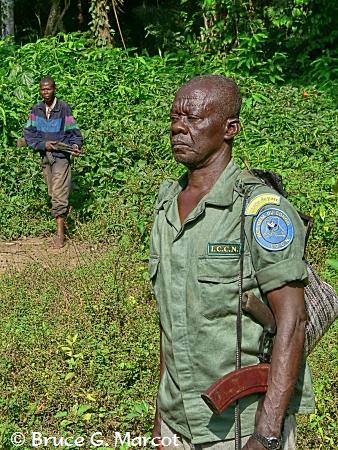
Forest
guards do weekly patrols into
the dense, dangerous jungles of the
Congo River Basin. These two fellows protected and
guided
us on a trek into a remote tropical forest
park, carrying AK-47s with scant
ammunition, a machete to hack a path,
and little else. The guns would be no match for any
of the organized poacher gangs we might
encounter, and would only, hopefully
frighten away both poachers and any
aggressive male elephants that commonly
inhabit these forests.
I have traveled with some of these guards during treks into the Congo River
Basin, in tiger reserves of India, in dense forests of the Russian Far East,
and elsewhere ... and have seen how, at times, poorly outfitted, poorly paid
(if at all), yet astoundingly resolute are these amazing people. They
deserve all of our support, adulation, and admiration.

Note
the patches on the uniform
of the guard picture above. ICCN
is an organization dedicated to
civil society and government working
together for peace and human security. And the logo in the
round patch is the outline
of the Democratic Republic of the Congo, with
the iconic okapi,
a rare ungulate found
only in remote parks here in central Africa.
So, think you have
what it takes to be a nature guard? Here are a few of the typical living
situations -- guard stations -- I encountered during some of my work &
travels:

Forest guard station -- mud and thatch huts, with no running water,
sanitation, food source, or electricity -- in Salonga National Park,
heart of the Democratic Republic of the Congo.
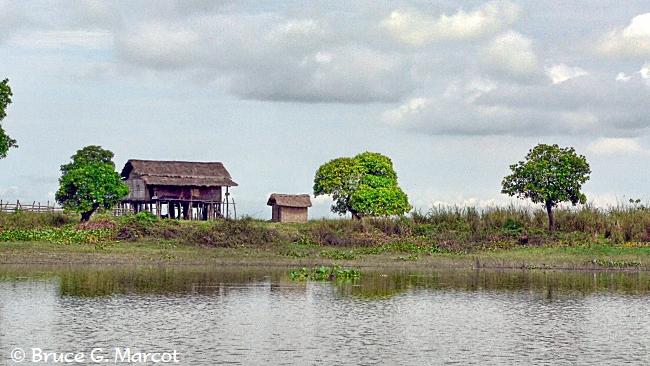
This, and the following several photos, are of guard stations
along the Brahmaputra River in Kaziranga National Park,
northeast India, in the state of Assam.
Life is very isolated here. And very lonely.
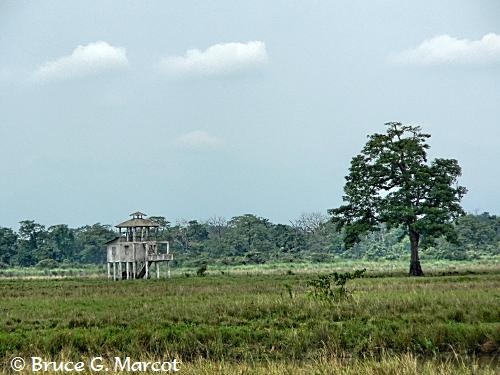
Notice how this guard station -- again in Kaziranga National Park,
northeast India -- is on high stilts. This is for at least two reasons:
protection from the seasonal monsoon floods (imagine being
trapped there during high water!), and protection from
wild elephants, rhinos, and tigers that roam the park.
It may also provide some protection from marauding
poachers, as well.
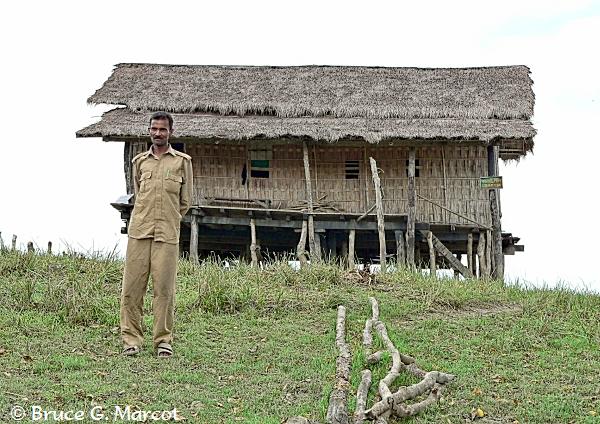
A forest guard at his typical guard station in northeast India.
These are solitary men, living away from their families and
any semblance of creature comforts.
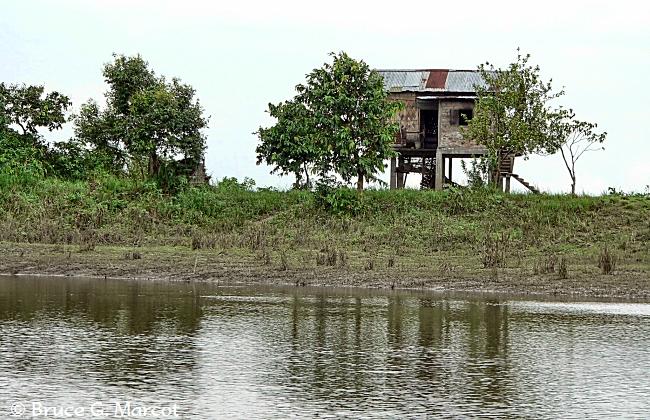
Another guard station in northeast India, this one along a riverbank
that floods annually, sometimes catastrophically so.
|
Index |
Location | Search | About EPOW | ... Next >